Whether it’s the classic one-eyed, peg-legged, crow-sporting classic pirates or the modern day Somalian pirates in their boats of unfortunate quality… as long as there are oceans, there will be pirates lookin’ for booty. This is all stuff you already knew about pirates, but here are 20 badass things you might not have known about our favorite treasure-seeking friends, starting with a slight embarrassment.
Julius Caesar crucified a whole pirate colony after being temporarily inconvenienced
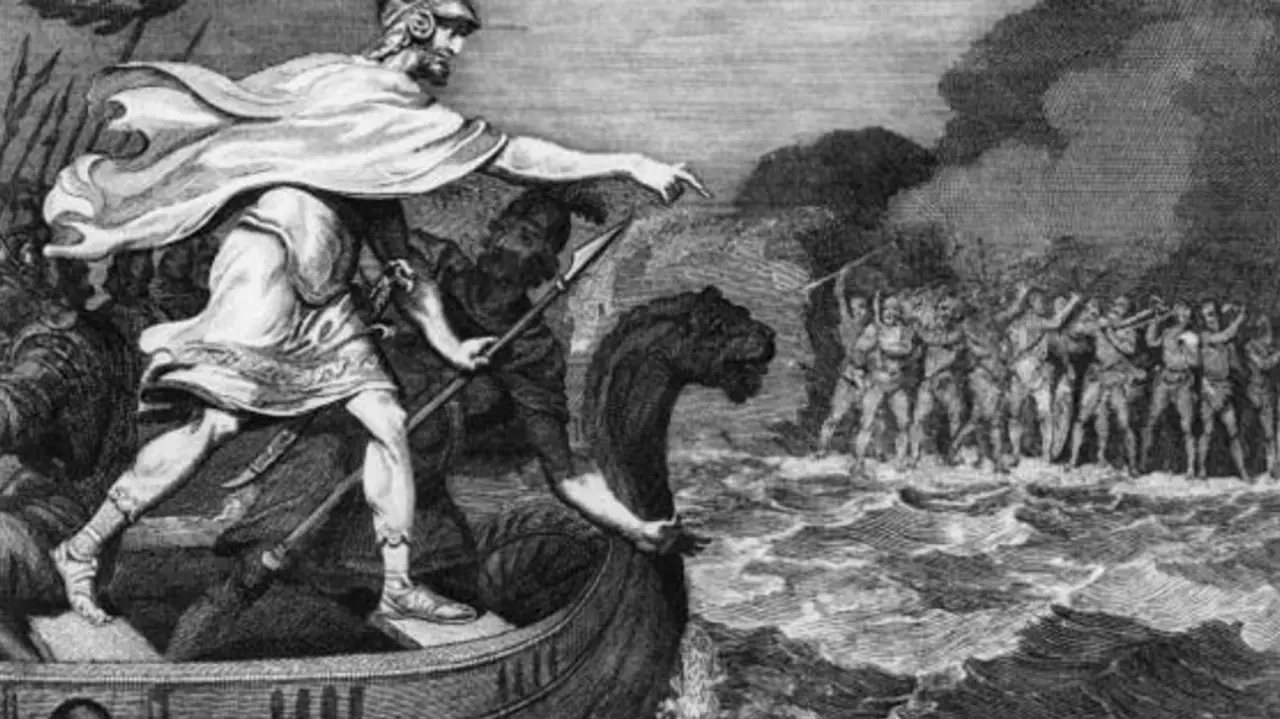
Julius Caesar was not someone to frick around with, but he still found himself captured by some pirates when he crossed the Aegean Sea. The pirates thought they had scored big and demanded a hefty ransom of 20 talents for the safe return of the Roman Emperor. Caesar insisted he was worth at least 50.
During his captivity, Caesar told the pirates that he was definitely gonna come back and have them crucified, which they believed was a hilarious joke. Caesar’s ransom eventually came through and he was released. When he got back to Rome he raised a fleet of ships and found the pirates still chilling out on the same island they had put him on, still thinking the promise was a joke. He crucified them all and got back the 50 talents.
"Walking the plank" was real, after all
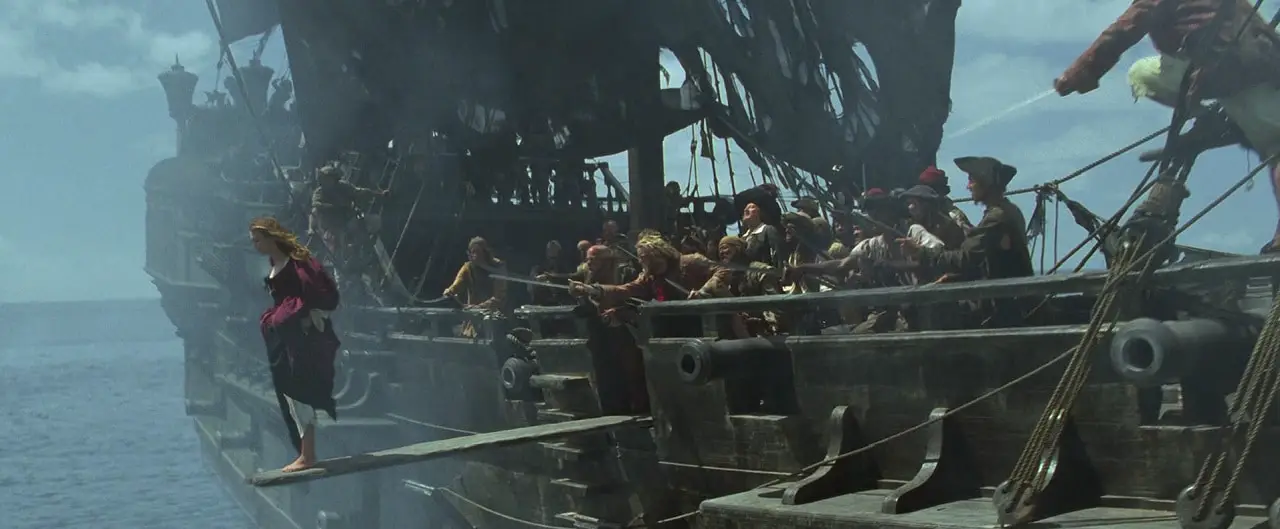
Being punished with having to walk the plank was a real thing and there are several recorded instances of unfortunate schmoes having to do it. Some examples from the Wikipedia entry on walking the plank:
- In July 1822, William Smith, captain of the British sloop Blessing, was forced to walk the plank by the Spanish pirate crew of the schooner Emanuel in the West Indies.
- The Times of London reported on February 14, 1829 that the packet boat Redpole was captured by the pirate schooner President and sunk. The commander was shot and the crew were made to walk the plank.
- A Mr. Claxton, surgeons-mate aboard the Garland in 1788, testified to a committee at the House of Commons about the use of the plank by slavers: "The food, notwithstanding the mortality, was so little, that if ten more days at sea, they should, as the captain and others said, have made the slaves walk the plank, that is, throw themselves overboard, or have eaten those slaves that died."
- Pirate John Derdrake, active in the Baltic in the late 1700s, was said to have drowned all his victims by forcing them to walk the plank.
- In Charles Gayarré's 1872 novel Fernando de Lemos: Truth and Fiction, the pirate Dominique Youx confessed to capturing the schooner Patriot, killing its crew and making its passenger, Theodosia Burr Alston (June 21, 1783 – approximately January 2 or 3, 1813) walk the plank. "She stepped on it and descended into the sea with graceful composure, as if she had been alighting from a carriage," Gayarré wrote in Youx's voice. "She sank, and rising again, she, with an indescribable smile of angelic sweetness, waved her hand to me as if she meant to say: 'Farewell, and thanks again'; and then sank forever." Because Gayarré mixed fact with fiction, it unknown whether Youx's confession was real or not.
- In 1829, pirates intercepted the Dutch brig Vhan Fredericka in the Leeward Passage between the Virgin Islands, and murdered most of the crew by making them walk the plank with cannonballs tied to their feet.
Buried treasure? Not so much
Only one famous pirate, William Kidd, was known to do it, and that was because he was supposed to be privateering on behalf of the English but got a little piratey while he was at it and wanted to keep the treasure for himself.
Otherwise, unfortunately, the notion of buried treasure was strictly for novel writers. For one thing, most raided ships weren’t exactly dripping in gold; they were more likely full of supplies, water and weapons. For another, pirates usually split their plunder among the crew, and then the crew actually had to live on what they got. Burying their pay in the sand makes as much sense as you and I putting our debit cards in a lockbox, then shoving that lockbox under a napping sumo wrestler.
Yet there is real pirate treasure
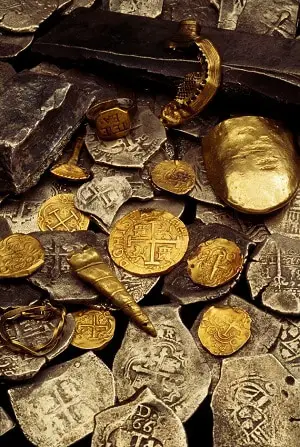
Consider the Whydah, the only fully verified and authenticated pirate shipwreck of the Golden Age of Piracy ever discovered in the world. First a little backstory via Wikipedia:
In late February 1717, the Whydah, under the command of Captain Lawrence Prince, a former buccaneer under Sir Henry Morgan, was navigating the Windward Passage between Cuba and Hispaniola when it was attacked by pirates led by "Black Sam" Bellamy. At the time of the Whydah's capture, Bellamy was in possession of two vessels, the 26-gun galley Sultana and the converted 10-gun sloop Marianne, captained by Bellamy's friend and investor Paulsgrave Williams. After a three-day chase, Prince surrendered his ship near the Bahamas with only a tbhltory exchange of cannon fire.
Bellamy decided to take the Whydah as his new flagship; several of its crew remained with their ship and joined the pirate gang. [...] In a gesture of goodwill toward Captain Prince who had surrendered without a struggle—and who in any case may have been favorably known by reputation to the pirate crew—Bellamy gave Sultana to Prince, along with £20 in silver and gold (equivalent to £3,100 in 2019).
On 26 April 1717, near Chatham, Massachusetts, the Whydah approached a thick, gray fog bank rolling across the water – signaling inclement weather ahead. [...] Sometime around sunset that evening, the winds completely died, and a massive fog bank made visibility virtually nil. The four ships in Bellamy's fleet lost sight of one another. [...] The weather turned into a violent nor'easter, a storm with gale force winds out of the east and northeast, which forced the vessel dangerously close to the breaking waves along the shoals of Cape Cod.
The ship was eventually driven aground at what today is Marconi Beach at Wellfleet, Massachusetts. At midnight she hit a sandbar, bow first in 16 feet (5 m) of water about 500 feet (152 m) from shore. Pummeled by 70 mph (110 km/h) winds and 30-to-40 ft (9-to-12 m) waves, the main mast snapped, pulling the ship into about 30 ft (9 m) of water, where she violently capsized, sending over 4.5 short tons (4.1 tonnes) of silver and gold, more than 60 cannons and 144 people to the ocean floor. The 60+ cannon on board ripped through the overturned decks of the ship and quickly broke it apart, scattering parts of the ship, 102 human bodies, and thousands of objects over a 4-mile (6.4 km) length of coast.
Did you catch that part about freakin' tons of gold and silver? So did underwater archaeologist and treasure hunter Barry Clifford, who set out to find the Wydah helped by a 1717 map of the wreck site made by Captain Cyprian Southack. He found it in 1984, 260 years after its wrecking, under only 14 feet (4.3 m) of water and 5 feet (1.5 m) of sand, and recovered incredible amounts of silver, gold, and other valuable artifacts.
Citing federal admiralty law in 1988, the Massachusetts Supreme Court ruled that 100% of the Whydah rightfully belonged to Clifford, and he has kept The Whydah Collection intact without selling a single piece of the more than 200,000 recovered artifacts, which includes tens of thousands of coins, more than 60 cannon, and the "everyday" objects used by the crew. He exhibits a variety of the ship's artifacts, as well as from many of his other shipwreck discoveries, for the public to enjoy at his Whydah Pirate Museum in Massachusetts.
Ben Franklin's resume included piracy

It is said that there are few professions that haven't claimed Benjamin Franklin as one of their own. Franklin was history’s original ultimate badass and got involved in anything and everything that a man could conceivably patriotically enjoy. He loved partying with prostitutes (for diplomacy!). He was a brilliant inventor and businessman. He played one of the most vital roles in the American Revolution.
And so of course he also ran a pirate fleet. His pirate activities -- mostly capturing British sailors to use them as barter for captured Americans -- qualified him for hanging had the revolution failed. Instead, the revolution was a success (because it had guys like Franklin) and he had many long years of drinking, doing drugs, blowing people’s minds, and of course banging hot chicks.
Thomas Edison's movie piracy bankrupted a dude named Méliès
When Thomas Edison needed to unwind from a long day of creating the first commercially viable light bulb, he liked to watch a good motion picture. One of his favorites was a little ditty entitled A Trip to the Moon by Georges Méliès, and he liked it so much that he made hundreds of bootleg copies of it for his friends to enjoy. The problem was these unauthorized copies of the film ended up eventually bankrupting Méliès. It really sucks to be reminded of the guy who ruined your life every time you turn on a light bulb. (note to self: let's make a list of all the people Edison screwed over)
Japanese pirates vs. Shaolin monks
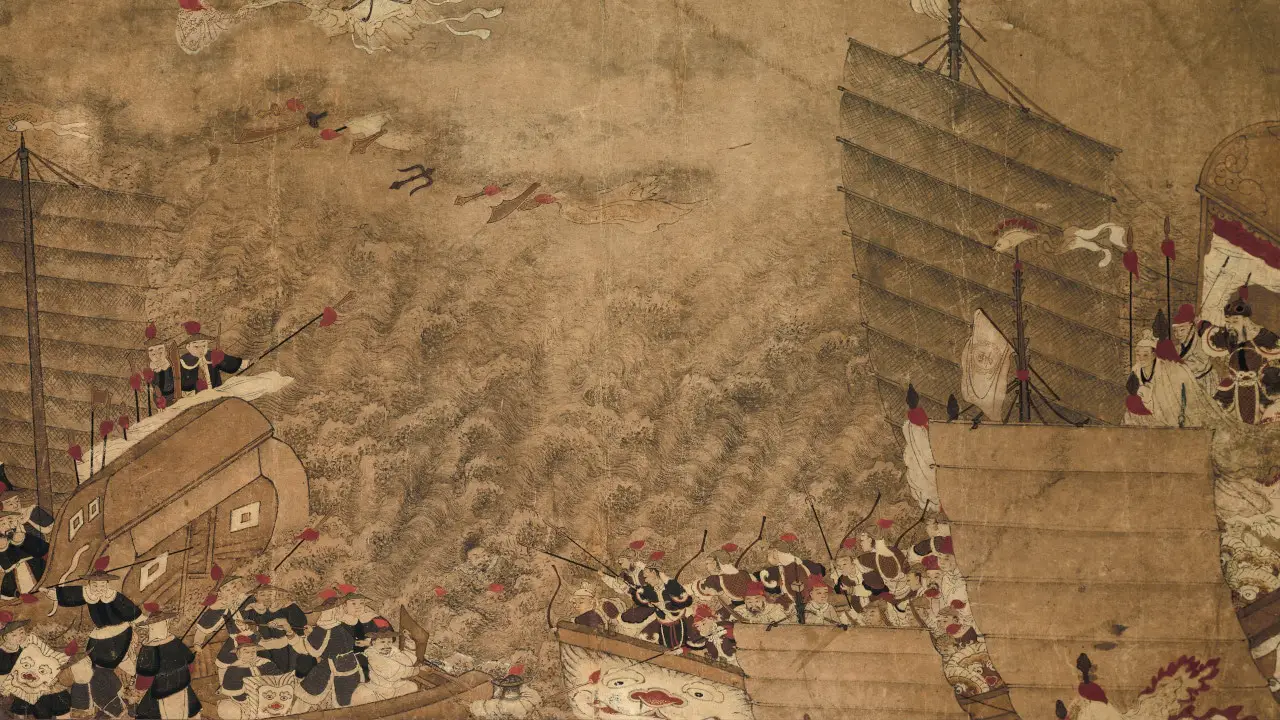
The Japanese are a seafaring nation, so the business of piracy came natural to them and they were REALLY good at being pirates. Organized military operations couldn’t handle the Japanese pirates, so, just like in a movie or comic book, officials called on the Shaolin Monks to come in and beat a little pirate ass when no one else was up to the challenge.
Desperate to regain control of the lawless coast, Nanjing official Wan Biao mobilized the monks of Shaolin, Funiu, and Wutaishan. The monks fought the pirates in at least four battles.
The first took place in the spring of 1553 on Mount Zhe, which overlooks the entrance to Hangzhou City via the Qiantang River. Although details are scarce, Zheng Ruoceng notes that this was a victory for the monastic forces.
The second battle was the monks' greatest victory: the Battle of Wengjiagang, which was fought in the Huangpu River Delta in July of 1553. On July 21, 120 monks met an approximately equal number of pirates in battle. The monks were victorious and chased the remnants of the pirate band south for 10 days, killing every last pirate. Monastic forces suffered only four casualties in the fighting.
During the battle and mop-up operation, the Shaolin monks were noted for their ruthlessness. One monk used an iron staff to kill the wife of one of the pirates as she tried to escape the slaughter.
Several dozen monks took part in two more battles in the Huangpu delta that year. The fourth battle was a grievous defeat, due to incompetent strategic planning by the army general in charge. After that fiasco, the monks of Shaolin Temple and the other monasteries seem to have lost interest in serving as paramilitary forces for the Emperor.
Blackbeard was the most famous pirate of all
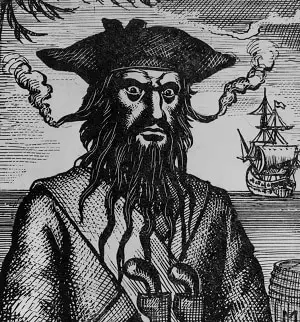
And he learned his skills from a guy named Captain Hornigold, which is the funniest name ever recorded in history. The thing about Blackbeard was that he was sort of a real life Dread Pirate Roberts (alternative), in that his reputation is more fearsome than his deeds.
The real Blackbeard probably never actually killed anyone, he just depended on everyone being scared enough of him to give up before he had to.
Pirates were pretty fair
For one thing, the captain and his second in command were often elected by the crew, and injured pirates were usually given a kind of disability compensation. Plus, runaway slaves and Native Americans were given a fair share on pirate ships whereas they probably wouldn’t have gotten the same kind of opportunities anywhere else.
The most famous lady pirate was saved by her unborn child
 When Irish lady pirate Anne Bonny was sentenced to execution in 1720, she “pleaded her belly” to avoid her sentence.
When Irish lady pirate Anne Bonny was sentenced to execution in 1720, she “pleaded her belly” to avoid her sentence.
Pleading the belly was a process available at English common law, which permitted a woman in the later stages of pregnancy to receive a reprieve of her death sentence until after she bore her child. The plea was available at least as early as 1387 and was eventually rendered obsolete by the Sentence of Death (Expectant Mothers) Act 1931, which stated that an expecting mother would automatically have her death sentence commuted to life imprisonment with hard labor.
The plea did not constitute a defense, and could only be made after a verdict of guilty was delivered. Upon making the plea, the convict was entitled to be examined by a jury of matrons, generally selected from the observers present at the trial. If she was found to be pregnant with a quick child (that is, a fetus sufficiently developed to render its movement detectable) the convict was granted a reprieve of sentence until the next hanging time after her delivery.
Scholarly reviews of the Old Bailey Sessions Papers and Assize records from the reigns of Elizabeth I and James I have shown that women granted such reprieves were often subsequently granted pardons or had their sentences commuted to transportation (exiled to a distant colony).
As a check against abuse of the system, the law held that no women could be granted a second reprieve from the original sentence on the ground of subsequent pregnancy, even if the fetus had quickened. In the event that a female prisoner became pregnant, her gaoler or the local sheriff was subject to a fine.
Chinese pirates were legion
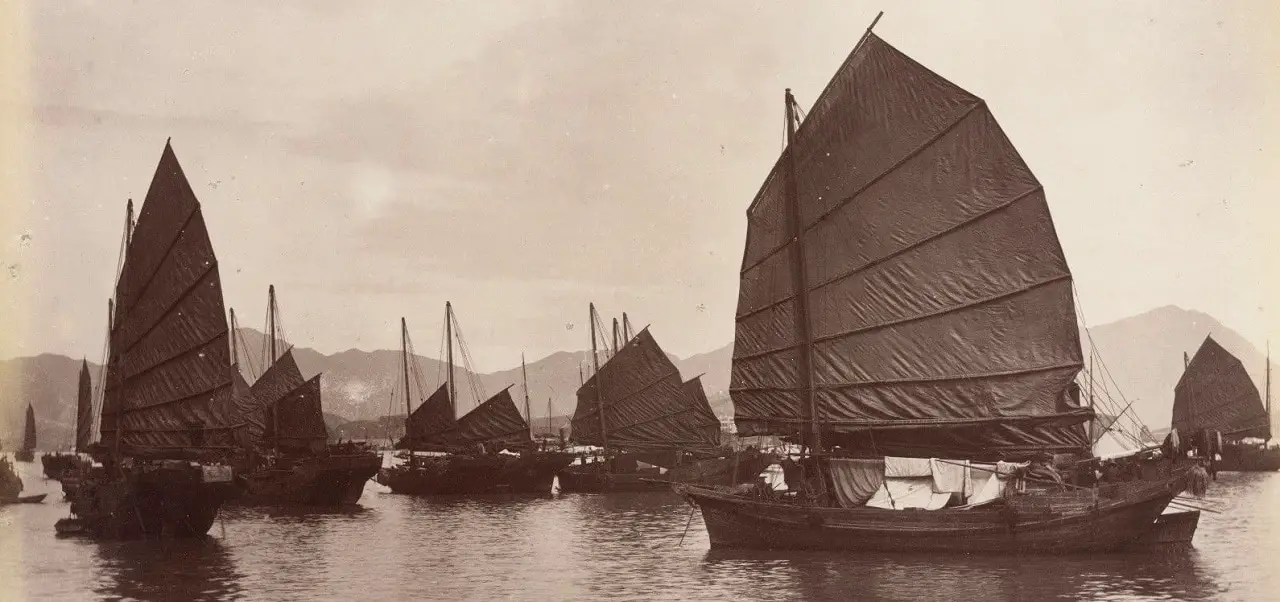
Another famous female pirate, Ching Shih (literally: "Madame Ching"), was a Chinese pirate leader who terrorized the China Seas during the Jiaqing Emperor period of the Qing dynasty in the early 19th-century. She commanded over 300 junks (traditional Chinese sailing ships) manned by 20,000(!!) to 40,000(!!!!!) pirates. She entered into conflict with the major nations, such as the British Empire, the Portuguese Empire, and the Qing dynasty.
Pirate-speak is (unfortunately) a Disney invention
One of the things we all love about pirates is the awesome way they said weird shit. “Avast ye!” “ARRRRRGH!” “Shiver me timbers!” Right? It turns out that this particular endearing quality is complete and utter bullshit -- pirates just talked like any other sailors of the day. The pirate language we are all familiar with stems from the 1950s Disney movie Treasure Island.
There's a pirate stock exchange

Stock market investing plays a pivotal role in the global economy and having foresight on the horizon of industry and technology can make you a major player. Things are a bit different in Somalia. They don’t have the convenience of E-Trade there, so instead they invest in pirate missions. They actually bet on whether pirate hijackings will be successful or fail and invest in different bands of pirates.
If only someone could tell them to turn their stock exchange into a sweetass MMORPG. If only.
20% of the US' entire annual expenditure went to piracy-related matters
Back in the day, pirates used to really wreak havoc on a national budget. It was so bad during the 1800s that 20 percent of the entire annual expenses for the US were dedicated to pirate ransoms and tributes. The U.S. also paid 1/6 of the entire country’s budget to pirates for the safe return of 115 prisoners.
Piracy was enough of a problem that some states had to enter into the redemption business. In Denmark, "At the beginning of the 18th century money was collected systematically in all churches, and a so called 'slave fund' (slavekasse) was established by the state in 1715. Funds were brought in through a compulsory insurance sum for seafarers. 165 slaves were ransomed by this institution between 1716 and 1736." "Between 1716 and 1754 19 ships from Denmark-Norway were captured with 208 men; piracy was thus a serious problem for the Danish merchant fleet."
Pirates are older than words

It should come as no surprise that as long as man has taken to the seas for travel/commerce/to run away from horrific murders committed in the throes of passion, other men have taken to the seas to rip those first men off. In fact, waaaaaay back in the 2nd millennium BC, there was a whole confederacy of pirates.
So, at about the same time people figured out how to use chariots and invented the concept of an alphabet, the Sea Peoples were already raiding ships on the Mediterranean Sea. And from what we can tell, that’s pretty much all they did. Whether or not they wore eyeliner and sloshed drunkenly around the ocean is not on record but very probable.
There's pirate insurance
There are insurance policies for damn near everything these days. Actresses can ensure their asses. You can also insure your yacht from the threat of pirate attack. The call center that handles the pirate attack insurance must field the most hilarious phone calls of all time.
A company called VessEx goes way above and beyond and will actually send hardcore dudes into war zones and into battle with pirates to get your stuff back.

Pirates are NOT privateers
Before most countries had actual navies, they relied on privateers to do their dirty work on the high seas. Like pirates, privateers were usually rogue sailors or fortune seekers who took to the ocean because they didn’t have many options at home. Unlike pirates, privateers were actually commissioned by their king or queen to capture enemy ships. Which was why the English considered Francis Drake a hero and knighted his thieving ass, while the Spanish considered him a criminal. One thing that everyone agrees on is that without privateers, the United States would have mos’ def lost the Revolutionary War. Privateering and piracy weren’t even considered illegal until 1856.
In fact…
The Boston Tea Party was technically an act of piracy
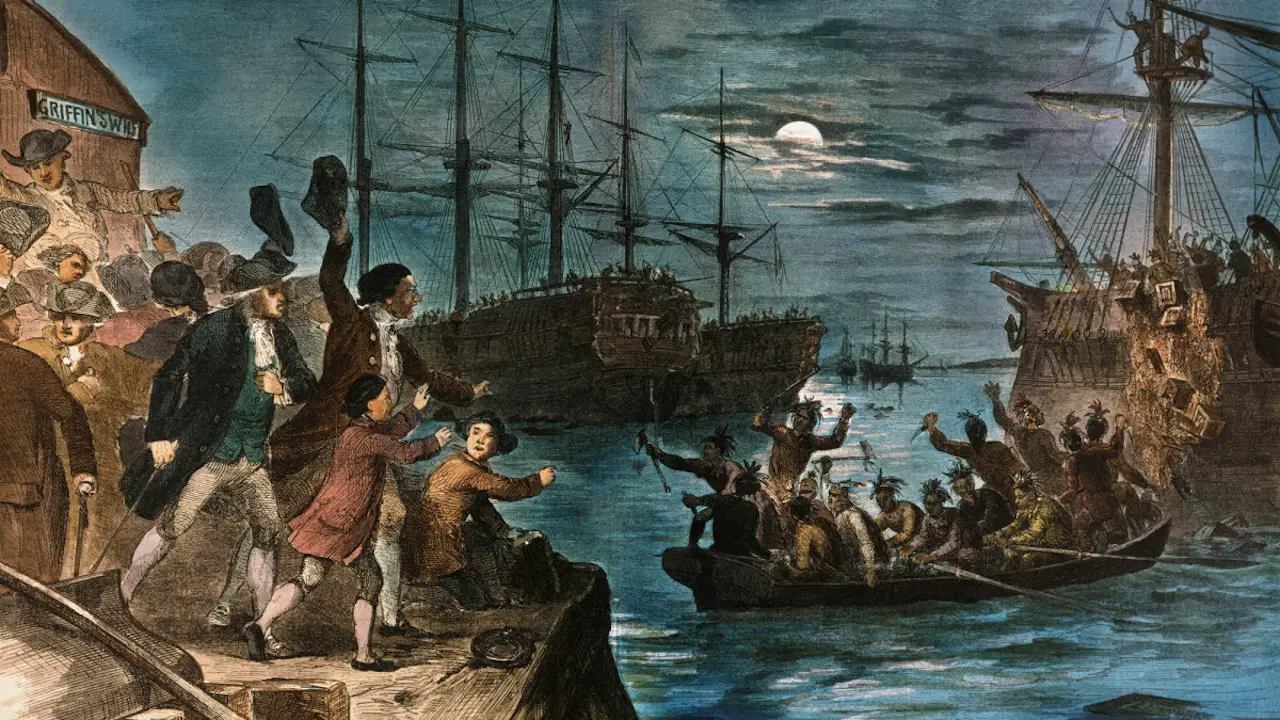
Because it was a private party destroying someone else’s property on the water. Piracy. So the next time you’re high as a kite on your jet ski and you accidentally dump your friend’s Coors Light into the lake, consider yourself a pirate.
The Jolly Roger was only one pirate flag of many
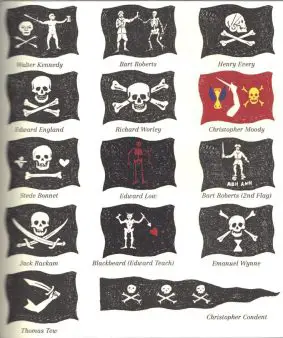
And that’s if they had one at all. Pirates weren’t stupid, you know. Most of the time they used neutral colored flags to get within firing range of their targets. It wasn’t until pirates fired their first warning shot that the recognized symbol of piracy, a plain black (or red!) flag was hoisted, usually in the hopes that their opponents would just crap their pants and abandon ship.
Speaking of the Jolly Roger, one theory about its etymology is that it comes from the red flags used during naval warfare to signal “no mercy,” called Joli Rouge (“pretty red”) by the French.
They made a porn version of Pirates of the Caribbean
Hardcore pornography had always been sorely lacking those little production extras like solid lighting and a good caterer. One man had long had a dream of making an epic blockbuster porno with mind-blowing special effects, intense action sequences and a killer story line. That man’s dream became reality when the green light was given to Pirates XXX. They even had the perfect pirate ship to shoot the movie on.
The hitch in the plan was they had to lie to the guy who owned the ship. To allow them to shoot the porno on there… they simply told the owner that he was doing a Disney movie. That guy was probably very pissed at Disney when he found all those semen stains.



Something to dive into: the part where the only pirates to exist are all on Afro-Eastern territories.
Aside from that, gently caress Disney (not a typo BTW)